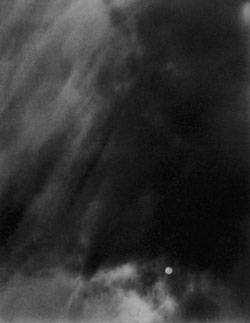Be warned. This is total niche content. But just think of it. We assume everything is photographable. In some cultures it is suggested to better leave your camera behind. Photographing in certain religious and ethnic communities isn’t the wisest, most culturally-sensitive idea. Even without a camera, there can be so much to see and be captured through words. Not that the photographs you wouldn’t take make life poorer. But what about all the photos “never taken that weren’t meant to be forgotten. Opportunities missed. Simple failures. Occasions when I wished I’d taken the picture, or not forgotten the camera, or had been brave enough to click the shutter,” as Michael David Murphy says, artist behind the project Unphotographable.
Photographs you did not take or weren’t supposed to take, they’re the unphotographed. The unphotographable refers to a different level. It’s not that what you don’t see is empty or does not exist. We can easily make use of other forms of seeing and imagining that do not and perhaps cannot exist. Et voilà the unphotographable.
In a way, the unphotographable is also “that which cannot be photographed.” You’ll say anything can be photographed. Well some photographers tried to capture the impossible, such as thought, time, ghosts or even gods; photographers who are using photographic means to try to photograph something that is essentially unphotographable: thought, history, time, dreams.

Try capture something that lies outside our perception — which, in fact, has long been an important aspect of the medium of photography and its history. Photography has always flirted with and tested its own representational boundaries.
Take Alfred Stieglitz, regarded by many as the father of American fine art photography. He was making remarkable photographs as early as the 1880s. But when he turned his lens skyward to shoot clouds in the 1920s and 1930s, he had a pretty unusual goal in mind: to compose a symphony. Said Stieglitz in 1923:
I wanted a series of photographs which when seen by Ernest Bloch he would exclaim: Music! Music! Man, why that is music!
Stieglitz didn’t just want his photography to appear symphonic, though. He had for years believed the medium itself was an art form; one that could not only produce beautiful imagery — reminiscent of, say, painting or sculpture — but could convey both an external reality and internal experience.
The resulting series, Equivalents, was revolutionary, and is now recognized as some of the very first abstract modernist art photography. Stieglitz transformed the camera from a slave-like recorder of events to a window through which the transcendent might be experienced.
The lyrical shape-shifting of clouds — which seem to have no true structure — served as an external equivalent to changeable human feelings. Stieglitz had, by the standards of his day, photographed the unphotographable.
Explains Adam Bell in his book review of The Unphotographable, a gallery anthology and catalog:
Despite its complex indexical nature, photography allows us to document and record the world unlike any other medium. However, the lens not only captures, but also transforms the world around us. It makes visible things and phenomena both seen and unseen. The unique, alchemical quality of photography to reveal and transform its subjects is one of its chief delights.

Photography’s paradoxical ability to render the immaterial and evanescent have been acknowledged since its earliest days.
But the unphotographable is as well the shots you missed for whatever reasons. Everything was perfect. You just missed the decisive moment. You may have waited on. It didn’t come back. Like it was meant to be unphotographable.
Unphotographable may also be if all your photographs fall short of what you actually see or intend to see.
Last but not least, the unphotographable is what’s breaking taboos and is against decency and common respect.
In fact the unphotographable is everything but frames taken.


